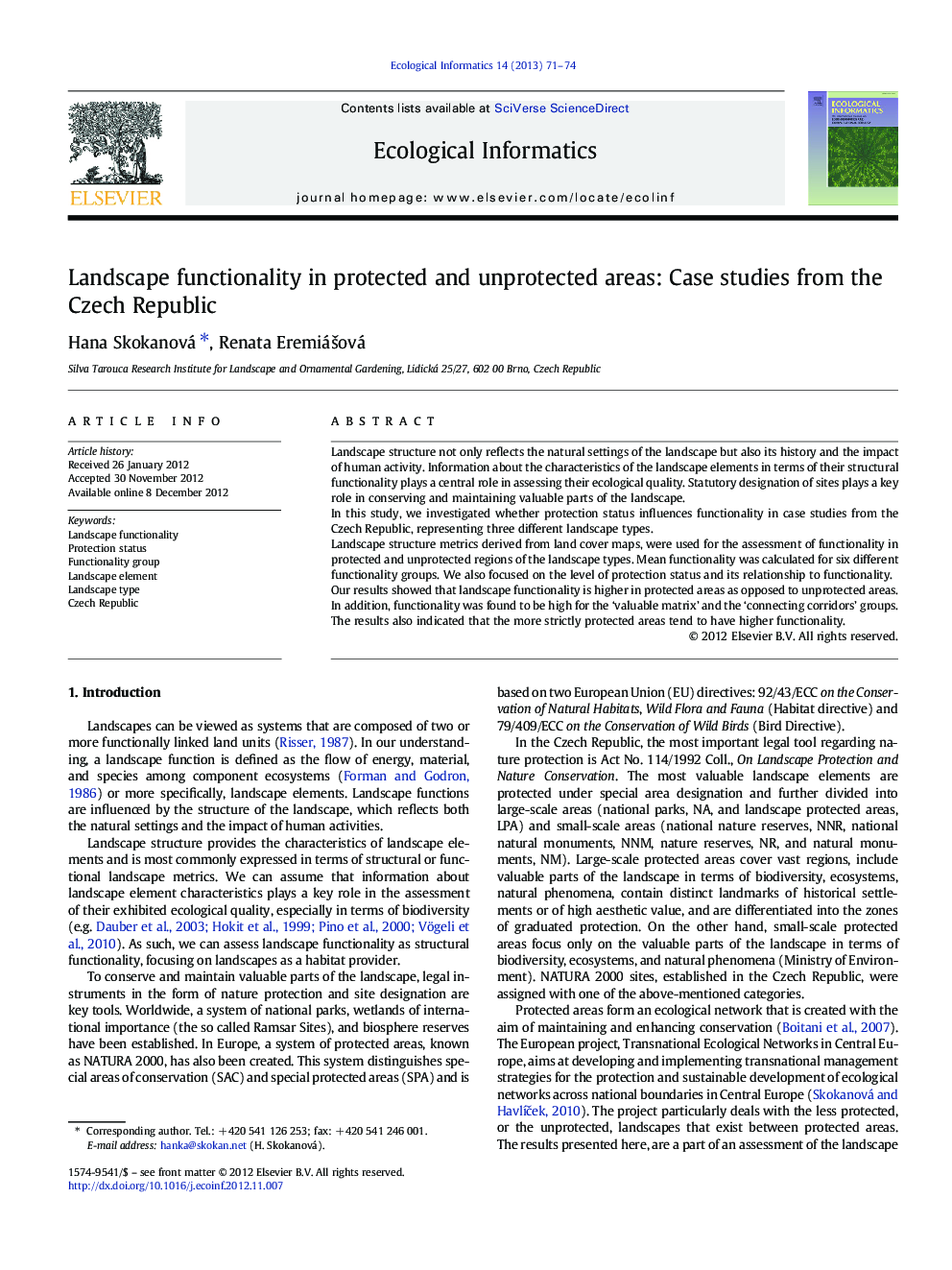| Article ID | Journal | Published Year | Pages | File Type |
|---|---|---|---|---|
| 4375049 | Ecological Informatics | 2013 | 4 Pages |
Landscape structure not only reflects the natural settings of the landscape but also its history and the impact of human activity. Information about the characteristics of the landscape elements in terms of their structural functionality plays a central role in assessing their ecological quality. Statutory designation of sites plays a key role in conserving and maintaining valuable parts of the landscape.In this study, we investigated whether protection status influences functionality in case studies from the Czech Republic, representing three different landscape types.Landscape structure metrics derived from land cover maps, were used for the assessment of functionality in protected and unprotected regions of the landscape types. Mean functionality was calculated for six different functionality groups. We also focused on the level of protection status and its relationship to functionality.Our results showed that landscape functionality is higher in protected areas as opposed to unprotected areas. In addition, functionality was found to be high for the ‘valuable matrix’ and the ‘connecting corridors’ groups. The results also indicated that the more strictly protected areas tend to have higher functionality.
► Landscape/structural functionality in various landscape types is assessed. ► An emphasis is given on protected and unprotected areas. ► Functionality is higher in the protected areas as opposed to the unprotected ones. ► The highest functionality was calculated for the valuable matrix.
